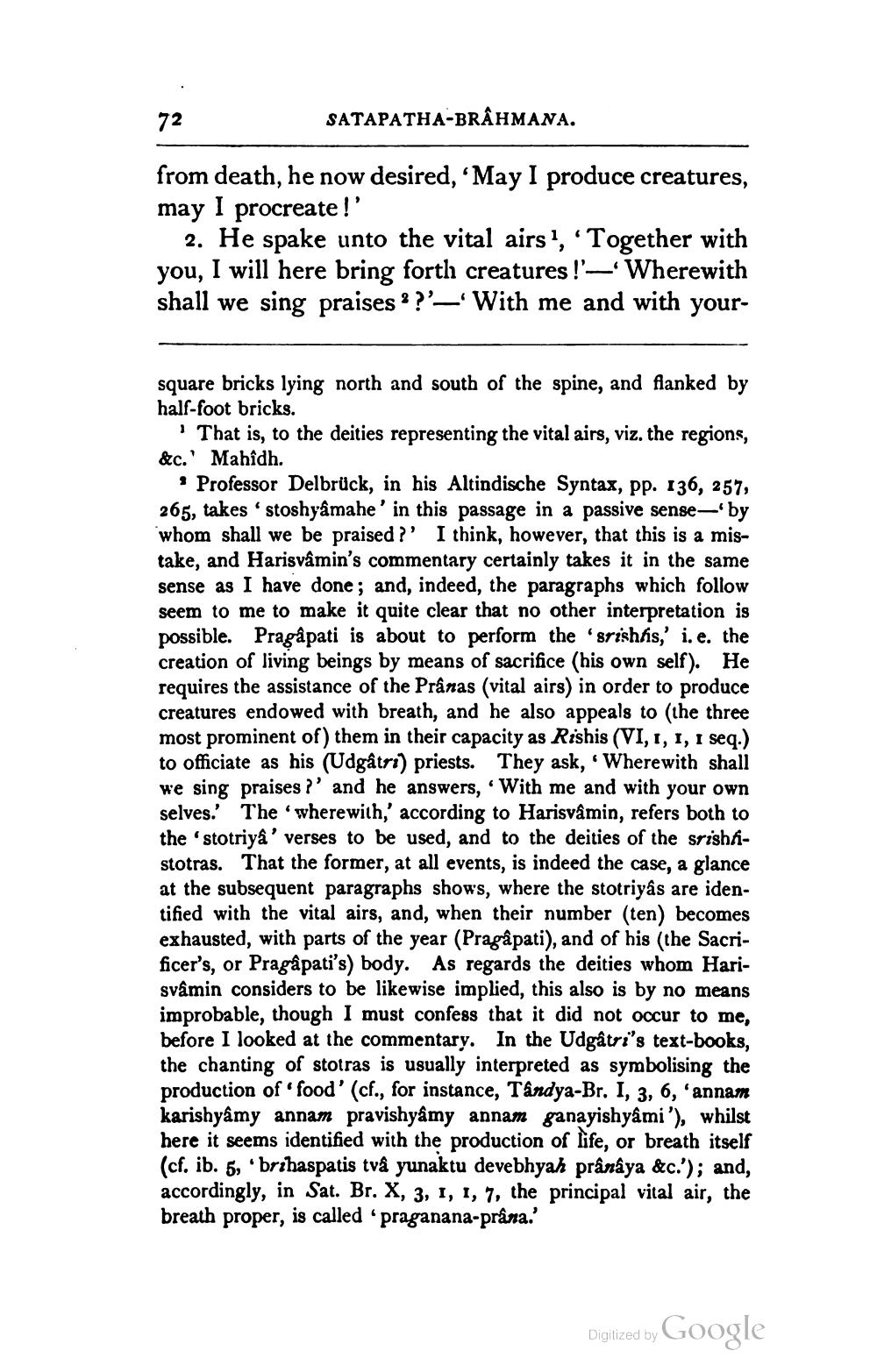________________
SATAPATHA-BRÂHMANA.
from death, he now desired, “May I produce creatures, may I procreate!'
2. He spake unto the vital airs, Together with you, I will here bring forth creatures !'—Wherewith shall we sing praises ? ?'— With me and with your
square bricks lying north and south of the spine, and flanked by hall-foot bricks.
That is, to the deities representing the vital airs, viz. the regions, &c.' Mahîdh.
Professor Delbrück, in his Altindische Syntax, pp. 136, 257, 265, takes 'stoshyâmahe' in this passage in a passive sense— by whom shall we be praised ?' I think, however, that this is a mistake, and Harisvâmin's commentary certainly takes it in the same sense as I have done; and, indeed, the paragraphs which follow seem to me to make it quite clear that no other interpretation is possible. Pragâpati is about to perform the 'srishhis,' i.e. the creation of living beings by means of sacrifice (his own self). He requires the assistance of the Pranas (vital airs) in order to produce creatures endowed with breath, and he also appeals to the three most prominent of them in their capacity as Rishis (VI, 1, 1, 1 seq.) to officiate as his (Udgâtri) priests. They ask, "Wherewith shall we sing praises ?' and he answers, With me and with your own selves.' The wherewith,' according to Harisvâmin, refers both to the 'stotriyâ' verses to be used, and to the deities of the srishtistotras. That the former, at all events, is indeed the case, a glance at the subsequent paragraphs shows, where the stotriyâs are identified with the vital airs, and, when their number (ten) becomes exhausted, with parts of the year (Pragâpati), and of his (the Sacrificer's, or Pragâpati's) body. As regards the deities whom Harisvâmin considers to be likewise implied, this also is by no means improbable, though I must confess that it did not occur to me, before I looked at the commentary. In the Udgâtri's text-books, the chanting of stotras is usually interpreted as symbolising the production of food' (cf., for instance, Tandya-Br. I, 3, 6, 'annam karishyâmy annam pravishyâmy annam ganayishyâmi'), whilst here it seems identified with the production of life, or breath itself (cf. ib. 6, obrihaspatis två yunaktu devebhyah prânaya &c.'); and, accordingly, in Sat. Br. X, 3, 1, 1, 7, the principal vital air, the breath proper, is called 'praganana-prâna.'
Digitized by Google




